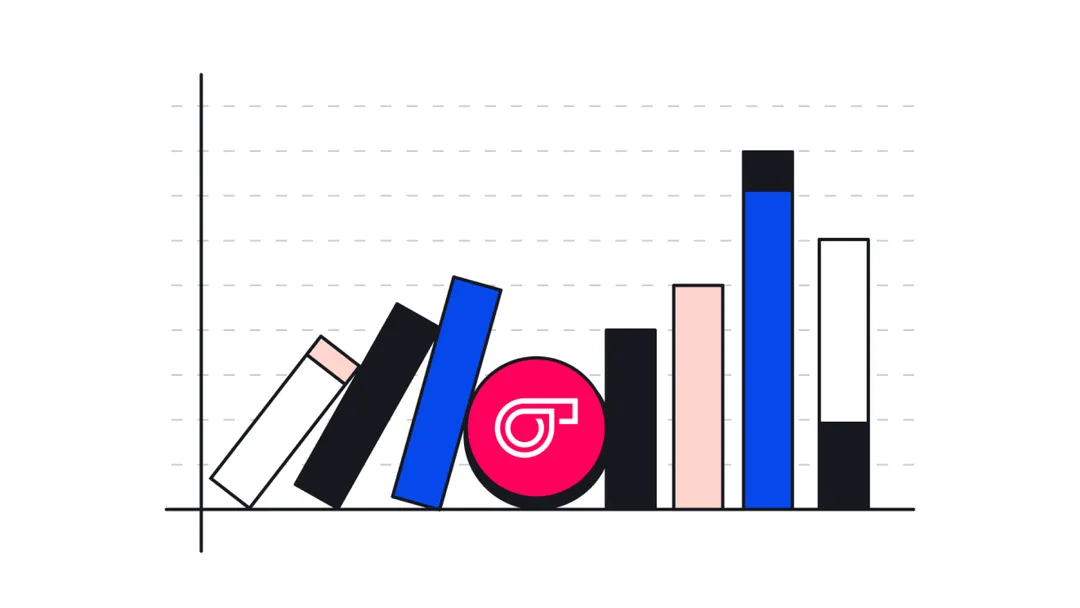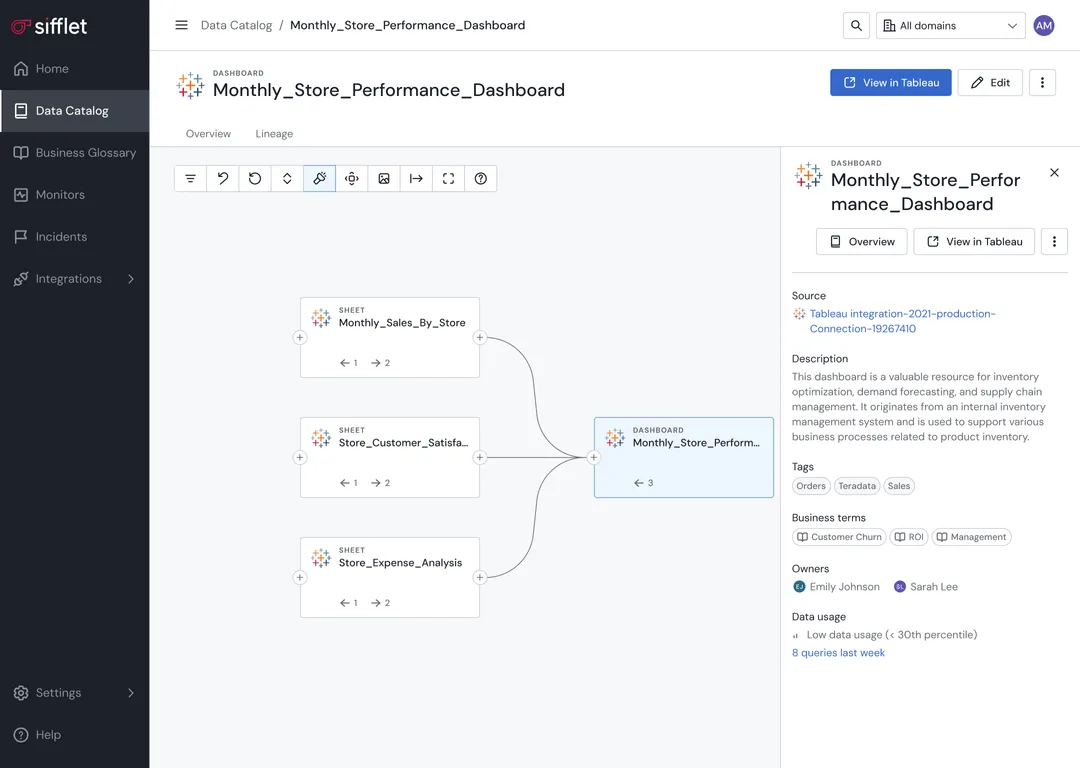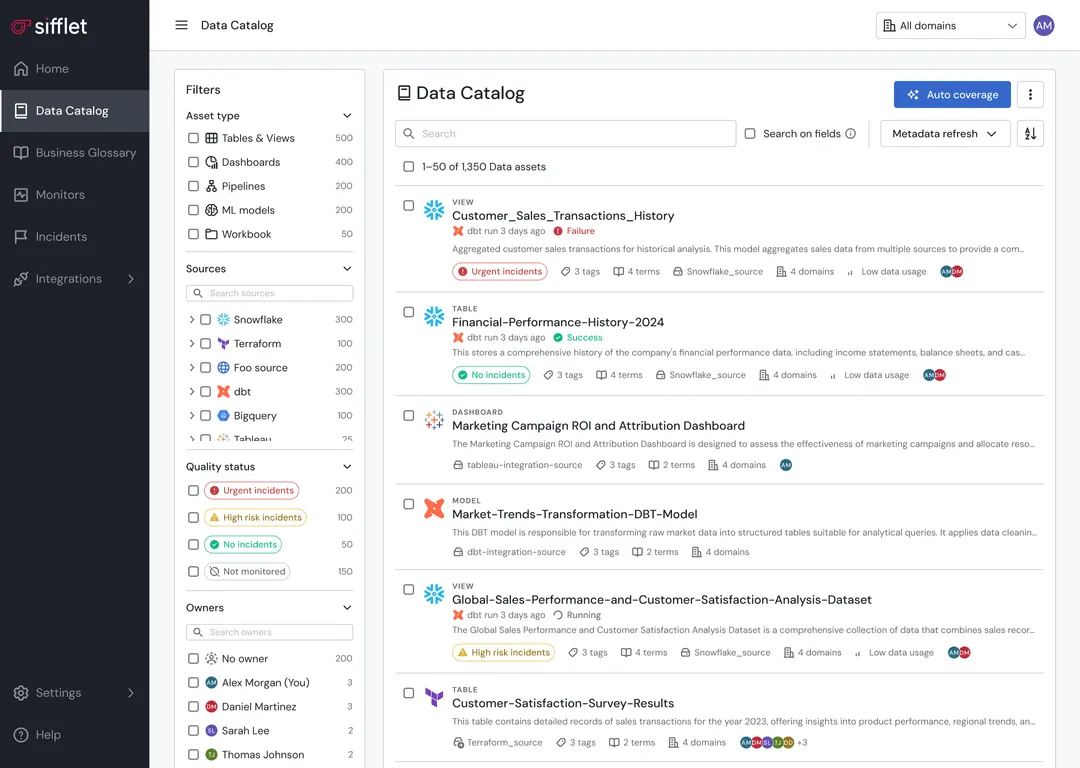Monetization of Data
Big Data. Big Potential.
Sell data products that meet the most demanding standards of data reliability, quality and health.

Identify Opportunities
Monetizing data starts with identifying your highest potential data sets. Sifflet can highlight patterns in data usage and quality that suggest monetization potential and help you uncover data combinations that could create value.
- Deep dive into patterns around data usage to identify high-value data sets through usage analytics
- Determine which data assets are most reliable and complete

Ensure Quality and Operational Excellence
It’s not enough to create a data product. Revenue depends on ensuring the highest levels of reliability and quality. Sifflet ensures quality and operational excellence to protect your revenue streams.
- Reduce the cost of maintaining your data products through automated monitoring
- Prevent and detect data quality issues before customers are impacted
- Empower rapid response to issues that could affect data product value
- Streamline data delivery and sharing processes















Frequently asked questions
How can data lineage tracking help with root cause analysis?
Data lineage tracking shows how data flows through your systems and how different assets depend on each other. This is incredibly helpful for root cause analysis because it lets you trace issues back to their source quickly. With Sifflet’s lineage capabilities, you can understand both upstream and downstream impacts of a data incident, making it easier to resolve problems and prevent future ones.
How does SQL Table Tracer support different SQL dialects for data lineage tracking?
SQL Table Tracer uses Antlr4 and a unified grammar with semantic predicates to support multiple SQL dialects like Snowflake, Redshift, and PostgreSQL. This ensures accurate data lineage tracking across diverse systems without needing separate parsers for each dialect.
What role does data lineage play in incident management and alerting?
Data lineage provides visibility into data dependencies, which helps teams assign, prioritize, and resolve alerts more effectively. In an observability platform like Sifflet, this means faster incident response, better alert correlation, and improved on-call management workflows.
What role does metadata play in a data observability platform?
Metadata provides context about your data, such as who created it, when it was modified, and how it's classified. In a data observability platform, strong metadata management enhances data discovery, supports compliance monitoring, and ensures consistent, high-quality data across systems.
How do Service Level Indicators (SLIs) help improve data product reliability?
SLIs are a fantastic way to measure the health and performance of your data products. By tracking metrics like data freshness, anomaly detection, and real-time alerts, you can ensure your data meets expectations and stays aligned with your team’s SLA compliance goals.
What kind of visibility does Sifflet provide for Airflow DAGs?
Sifflet offers a clear view of DAG run statuses and their potential impact on the rest of your data pipeline. Combined with data lineage tracking, it gives you full transparency, making root cause analysis and incident response much easier.
Why is data observability important for large organizations?
Data observability helps organizations ensure data quality, monitor pipelines in real time, and build trust in their data. At Big Data LDN, we’ll share how companies like Penguin Random House use observability tools to improve data governance and drive better decisions.
How does Sifflet support AI readiness within enterprises?
Sifflet reinforces AI-powered capabilities through features like data freshness checks, data profiling, and anomaly scoring. These tools ensure your data is accurate and trustworthy, which is crucial for training reliable machine learning models and enabling predictive analytics monitoring.













-p-500.png)
